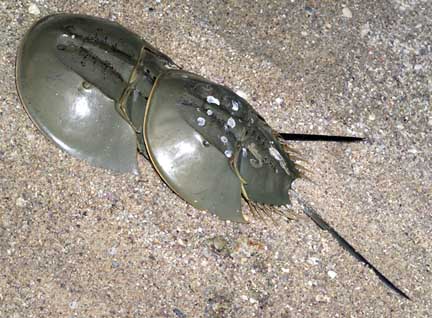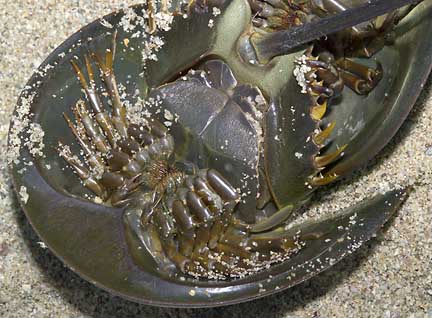From the lookout point, although the menacing presence of the dredging equipment loomed on the landscape accompanied by the ugly brown fence slicing across Labrador, things actually looked pretty good, as the receeding tide revealed pretty much the usual stuff still around.

View from the lookout point. Dredging platforms now line the coast, and the coffer dam can be seen sticking out on the right of the picture.
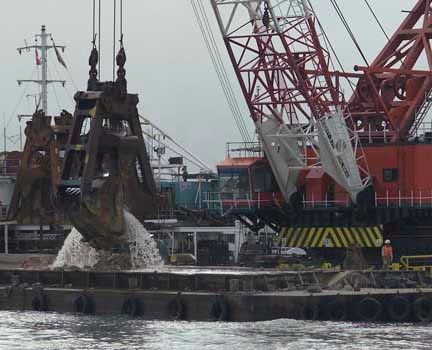
Close up of dredging. The huge clampy thing sure looks nasty. It must be as big as a bus!
On the shore, all the usual suspects were out... sea spiders, snapping shrimp, the hairy crabs, juvenile catfish, the snails and hermit crabs, Copper-banded butterfly fish, filefish, loads of zoanthids, all hanging out amidst the rocks and the green stuff. Also quite a number of slugs and slimy things - Elysia, a big Discodoris boholiensis, Pteraeolidia ianthina, the blue dragon, and Acanthozoon, the spotted flatworm. It was good to see them still in action, especially with all the construction going on. And it's good that so far there doesn't seem to have been any increase in the silt, from just looking at it.
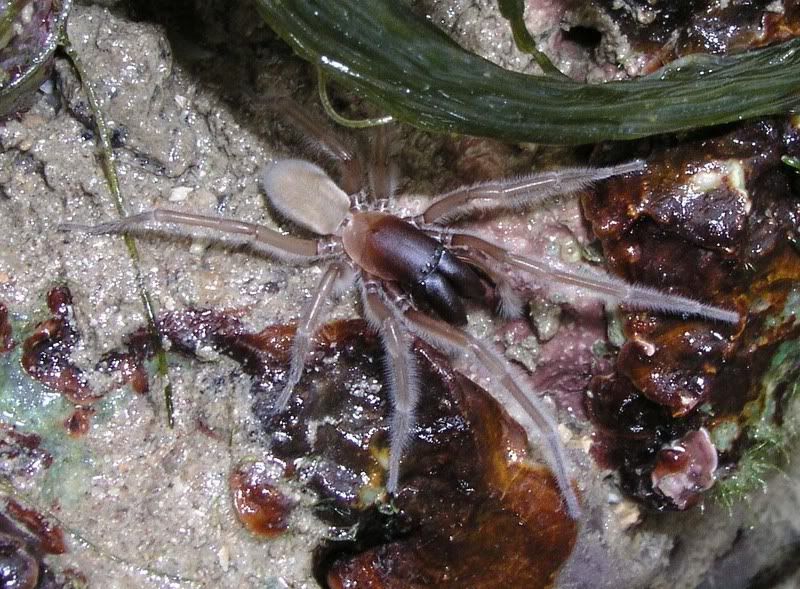
Sea spider!
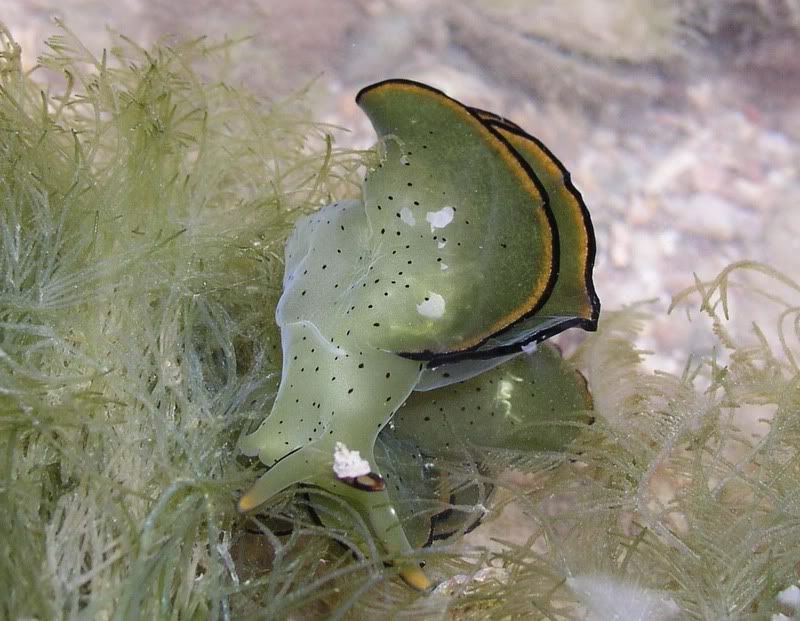
Somehow at the end of the year we always see the Bryopsis blooming on some of the Southern shores, and with it comes my favourite nudibranchs! This is Elysia ornata, one of the green leafy sap-suckers.

Just before the sun set and we were about to call it a day, Ria's sharp eyes spotted this adorable pair moving amongst the Thalassia.
For photos of the other marine critters we saw, view Budak's blog.
Just before we left, we chanced upon one of Labrador's spectacular sunsets, blocked by the ominous construction works! It's all well and good to consider economic development, but sometimes you really have to ask yourself, at what price this development? I suppose it's all a matter of weighing the benefits against the disadvantages. Hopefully one day the benefits of preserving local habitats and biodiversity will become more important than the benefits gained from any further economic development.

Many thanks to Ria for providing the photos of the dredging!



